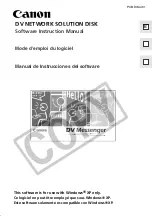
898
D
N0008589 3.3
DASS2
Digital Access Signaling System Number 2 (DASS2) is a UK proprietary standard for
signaling on ISDN connections between customer premises and the public network.
DASS2 is used between the customer equipment and ISDN local exchange and is suitable
for multiple access.
Data link connection identifier
See DLCI.
DDI Mux
The Digital Drop and Insert Mux media bay module is a specialized two-level module
allows you to choose which channels on a T1 line you want to dedicate to data
transmissions and which channels you want to dedicate to telephony operations. Both
lines are programmed under
Services, Telephony Services, Lines
.
default
Default settings are the settings automatically programmed into the programming when
you first install the system. You change the settings from their defaults using the Unified
Manager. Defaults are determined by which region and which telephony template you
choose when you first install your system. (Quick Start Wizard)
Delayed ring transfer
See DRT.
destination code
A destination code is an assigned number with up to 12-digits that the user dials before the
outgoing call string. The system reads and translates the code into routing and dial-out
information. This code must not conflict with any other access code on the system. Assign
destination codes in Destination Codes. (Services, Telephony Services, Call Routing)
DHCP
The Dynamic Host Configuration Protocol (DHCP) is a protocol that allows network
administrators to centrally manage and automate the assignment of IP addresses in an
network. When an organization sets up its computer users with a connection to the
internet, internet protocols (TCP/IP) demands that an IP address must be assigned to each
machine as well as to any device connected to the network.
Without DHCP, the IP address must be entered manually at each computer and, if
computers move to another location in another part of the network, a new IP address must
be entered. DHCP allows the network administrator to supervise and distribute IP
addresses from a central point. It also automatically sends a new IP address when a
computer is plugged into a different place in the network.
dial-up connection
A dial-up connection is a temporary connection between computers that is established
over an analog or digital telephone line.
Summary of Contents for BCM 3.7
Page 4: ...4 Software licensing N0008589 3 3...
Page 32: ...32 Contents N0008589 3 3 W 937 Index 939...
Page 46: ...46 Tables N0008589 3 3...
Page 64: ...64 How to get help N0008589 3 3...
Page 90: ...90 Manually activating Telnet N0008589 3 3...
Page 116: ...116 Delayed system restart N0008589 3 3...
Page 194: ...194 Configuring a data module N0008589 3 3...
Page 276: ...276 Setting line telco features N0008589 3 3...
Page 310: ...310 Using COS passwords N0008589 3 3...
Page 364: ...364 Enhanced 911 E911 configuration N0008589 3 3...
Page 380: ...380 Renumbering DNs N0008589 3 3...
Page 398: ...398 Saving wizard pages on your computer N0008589 3 3...
Page 458: ...458 Voice Mail settings N0008589 3 3...
Page 488: ...488 Setting system telco features N0008589 3 3...
Page 508: ...508 Other programming that affects public networking N0008589 3 3...
Page 522: ...522 PRI networking using Call by Call services N0008589 3 3...
Page 592: ...592 Monitoring Hunt groups N0008589 3 3...
Page 636: ...636 Configuring Double Density N0008589 3 3...
Page 640: ...640 Using the Network Update Wizard N0008589 3 3...
Page 666: ...666 Importing and Exporting DHCP data N0008589 3 3...
Page 722: ...722 Restarting the router N0008589 3 3...
Page 726: ...726 Important Web Cache considerations N0008589 3 3...
Page 748: ...748 Configuring an Interface with NAT N0008589 3 3...
Page 794: ...794 IPSec N0008589 3 3...
Page 818: ...818 Configuring the Policy Agent characteristics N0008589 3 3...
Page 832: ...832 Firewall rules for Business Communications Manager with Dialup interfaces N0008589 3 3...
Page 876: ...876 ISDN Programming N0008589 3 3...
Page 1004: ...1004 Index N0008589 3 3...
















































